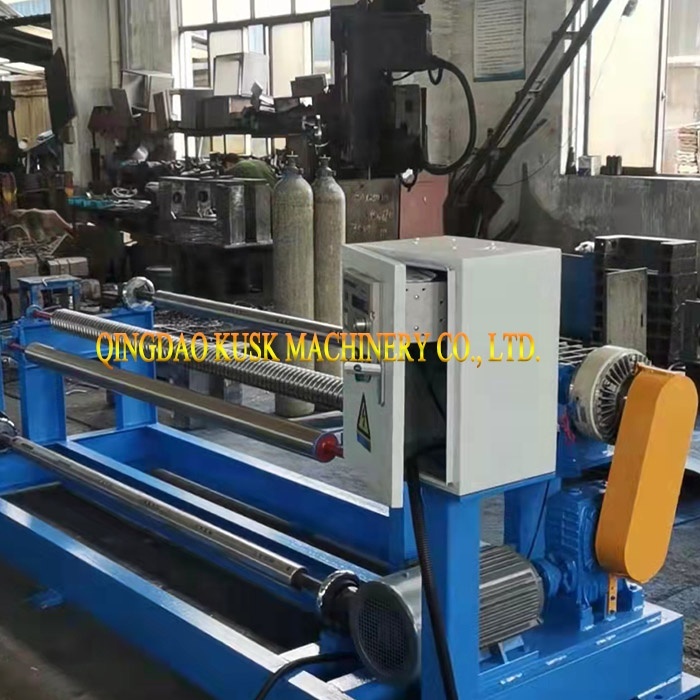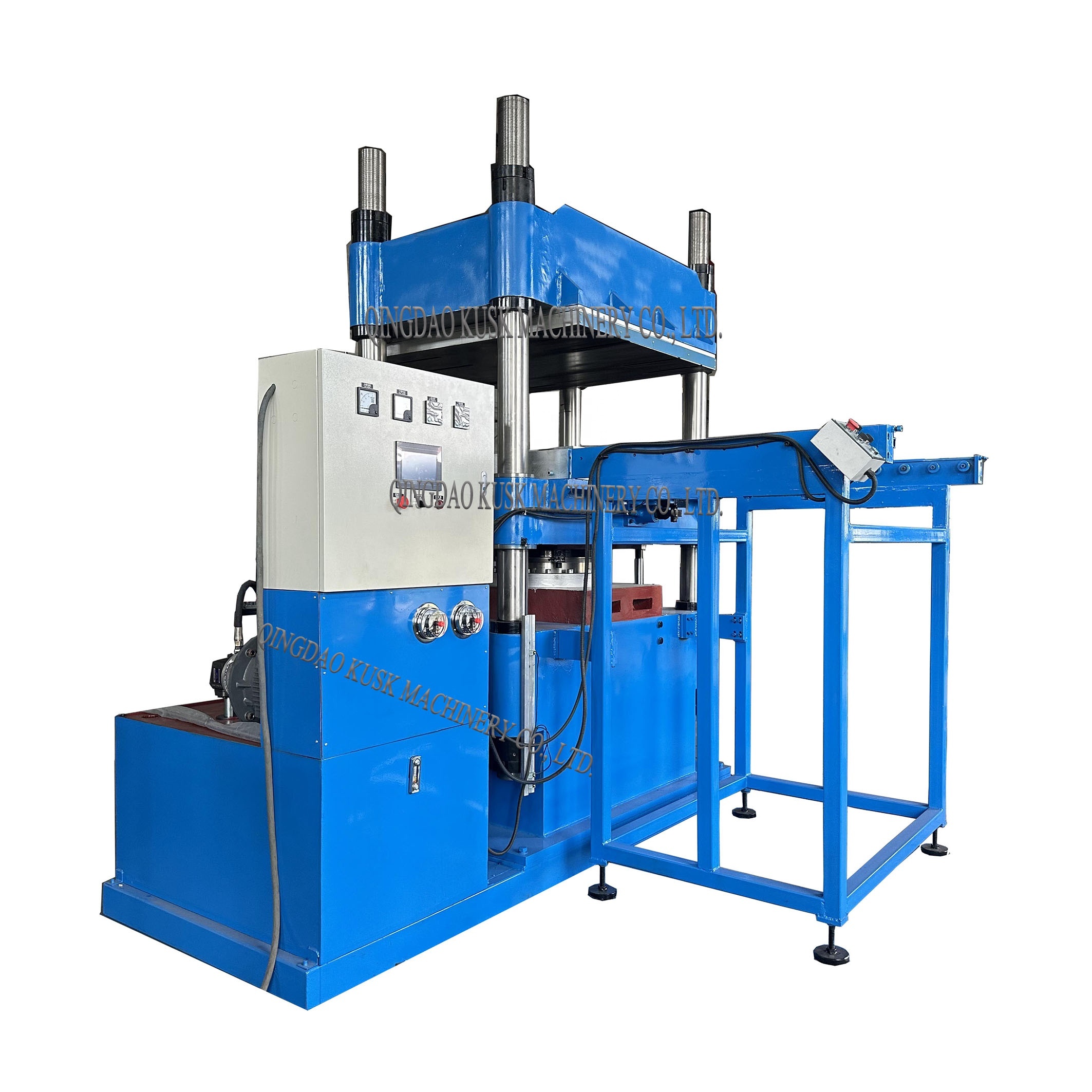Professional manufacturer with the design, development and production of rubber and plastic machinery
Maximizing Rubber Quality with Advanced Banbury Mixer Technology: A Comprehensive Guide
Sep 30,2025
Maximizing Rubber Quality with Advanced Banbury Mixer Technology
Table of Contents
- 1. Introduction to Banbury Mixer Technology
- 2. What is a Banbury Mixer?
- 3. The Importance of Rubber Quality in Manufacturing
- 4. How Banbury Mixers Work: A Detailed Breakdown
- 5. Advantages of Using Advanced Banbury Mixers
- 6. Innovations in Banbury Mixer Technology
- 7. Applications of Banbury Mixers in the Rubber Industry
- 8. Best Practices for Maximizing Rubber Quality with Banbury Mixers
- 9. Frequently Asked Questions
- 10. Conclusion
1. Introduction to Banbury Mixer Technology
In the world of rubber manufacturing, the **quality** of the rubber compounds is paramount. To achieve superior quality, manufacturers increasingly rely on advanced **Banbury mixer technology**. This innovative machinery not only enhances the mixing process but also ensures that the final rubber products meet high industry standards. This article provides a comprehensive understanding of how Banbury mixers function, their importance in rubber processing, and best practices for their effective use.
2. What is a Banbury Mixer?
A **Banbury mixer** is a type of internal mixer used in the rubber and plastics industries, designed for the efficient mixing of materials. It consists of two counter-rotating rotors placed within a closed chamber. The design allows for thorough mixing and distribution of additives, fillers, and various rubber compounds under controlled temperature and pressure conditions.
The key components of a Banbury mixer include:
- **Mixing Chamber**: The vessel where the rubber compounds are processed.
- **Rotors**: These are the heart of the mixing process, providing the necessary shear forces to blend materials effectively.
- **Cooling and Heating Systems**: These systems regulate the temperature to optimize the mixing process and prevent material degradation.
3. The Importance of Rubber Quality in Manufacturing
The quality of rubber has a direct impact on the performance, durability, and longevity of finished products. High-quality rubber ensures that items such as tires, seals, and gaskets function optimally under various environmental conditions. Factors influencing rubber quality include:
- **Consistency**: Uniformity in the rubber compound’s characteristics leads to predictable performance.
- **Durability**: High-quality rubber withstands wear and tear, enhancing product lifespan.
- **Performance**: Superior materials provide better elasticity, tensile strength, and resistance to environmental factors.
Investing in advanced mixer technology such as the Banbury mixer is crucial for manufacturers aiming to elevate their rubber quality and meet stringent industry specifications.
4. How Banbury Mixers Work: A Detailed Breakdown
The operation of a Banbury mixer can be divided into several key stages:
4.1 Loading of Raw Materials
The process begins with the loading of rubber base materials, fillers, and additives into the mixing chamber. Precise measurements are crucial to ensure consistency in the final product.
4.2 Mixing Process
Once the materials are loaded, the rotors start to rotate, creating a strong shear force that facilitates the mixing process. The design of the rotors ensures that the raw materials are continuously turned over, allowing for thorough blending.
4.3 Temperature Regulation
Temperature control is vital in the mixing process. The inclusion of heating and cooling systems allows operators to manage the temperature, ensuring that the rubber does not degrade while achieving optimal mixing conditions.
4.4 Discharge of Finished Compound
After the mixing process is complete, the rubber compound is discharged from the mixing chamber. This step can be automated or manual, depending on the specific configuration of the Banbury mixer.
5. Advantages of Using Advanced Banbury Mixers
Utilizing advanced Banbury mixers in rubber processing offers numerous benefits:
5.1 Enhanced Mixing Efficiency
The design of Banbury mixers allows for faster and more efficient mixing compared to traditional methods, reducing processing time and increasing output.
5.2 Improved Product Quality
The thorough mixing and controlled temperature conditions contribute to the production of high-quality rubber compounds, ensuring consistency and reliability.
5.3 Flexibility in Processing
Banbury mixers can accommodate various rubber formulations, making them versatile tools for manufacturers. This flexibility allows for easy adjustments to meet specific product requirements.
5.4 Reduced Labor Costs
Automated features in advanced Banbury mixers reduce the need for manual intervention, leading to lower labor costs and decreased risk of human error.
6. Innovations in Banbury Mixer Technology
Recent advancements in Banbury mixer technology have further improved mixing processes:
6.1 Smart Sensors and Automation
Modern Banbury mixers are equipped with smart sensors that monitor various parameters in real-time. This technology allows for automated adjustments to be made, optimizing the mixing process further.
6.2 Energy Efficiency
New designs focus on energy efficiency, utilizing advanced motors and drive systems that consume less power while maintaining peak performance.
6.3 Advanced Control Systems
Integrated control systems provide operators with enhanced visibility and control over the mixing process, allowing for quick adjustments and better quality management.
7. Applications of Banbury Mixers in the Rubber Industry
Banbury mixers play a crucial role across various applications in the rubber industry:
7.1 Tire Manufacturing
In tire production, Banbury mixers are essential for creating rubber compounds that offer optimal performance and durability under stress.
7.2 Seal and Gasket Production
Banbury mixers help produce high-quality rubber seals and gaskets that provide reliable sealing in automotive and industrial applications.
7.3 Rubber Flooring and Mats
The versatility of Banbury mixers extends to manufacturing rubber flooring, ensuring consistent texture and durability in the final product.
8. Best Practices for Maximizing Rubber Quality with Banbury Mixers
To achieve the best results with Banbury mixers, consider the following best practices:
8.1 Proper Material Preparation
Ensure all raw materials are pre-weighed and prepared to maintain consistency and accuracy during the mixing process.
8.2 Regular Maintenance
Conduct routine maintenance on mixers to prevent breakdowns and ensure optimal performance. This includes checking the rotors, seals, and temperature controls.
8.3 Continuous Training
Invest in training for operators to ensure they are familiar with the latest technologies and best practices associated with Banbury mixers.
9. Frequently Asked Questions
9.1 What types of materials can be mixed using a Banbury mixer?
Banbury mixers are designed primarily for rubber, but they can also mix thermoplastics and other compounds, making them versatile for various applications.
9.2 How does a Banbury mixer compare to other mixing methods?
Banbury mixers offer superior mixing efficiency, temperature control, and material consistency compared to traditional open mixers and other batch mixing methods.
9.3 What are the energy requirements for a Banbury mixer?
Energy requirements vary by model and capacity, but advancements in technology have led to more energy-efficient designs, reducing overall energy consumption.
9.4 Can Banbury mixers be customized for specific processes?
Yes, many manufacturers offer customizable features for Banbury mixers to meet the specific needs of various rubber processing applications.
9.5 What is the expected lifespan of a Banbury mixer?
With proper maintenance, a Banbury mixer can last for many years, often exceeding 10 to 15 years of operational life.
10. Conclusion
Advanced Banbury mixer technology plays a vital role in maximizing rubber quality in manufacturing. By understanding the mechanics, benefits, and best practices associated with this innovative machinery, manufacturers can enhance their production processes. As the rubber industry continues to evolve, staying abreast of advancements in mixing technology will be key to maintaining competitive advantage and ensuring superior product quality. Embracing these advancements will pave the way for the future of rubber manufacturing, leading to better products and increased customer satisfaction.
Hot Tags:
PREVIOUS:
Contact Us
E-mail:
tender701@gmail.com
tender701@163.com
Phone/WhatsApp:
+86 137 9243 6835
Address:
Huangshan Economic Zone, Huangdao, Qingdao,China



